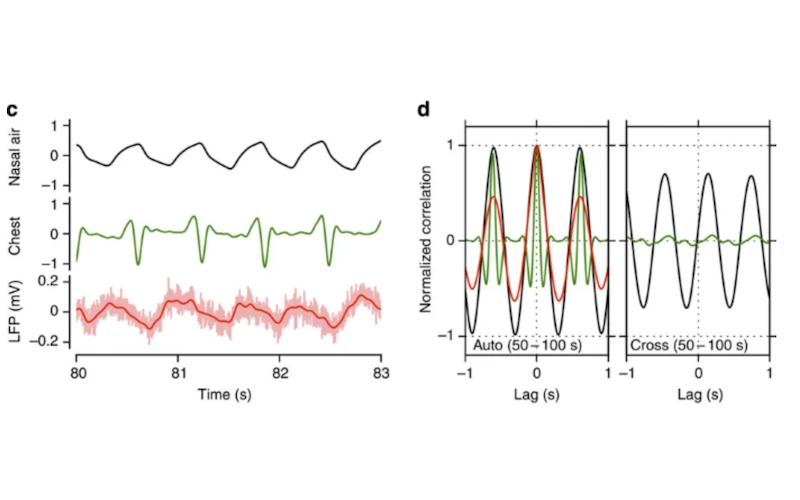
Oscillations, in biological systems and organisms, are present at all scales and can be observed right down to the sub-cellular level.
Breathing is an ‘uber-oscillator’ which creates fluctuations in the chemical composition of blood, vascular pressure and autonomic reflexes. Oscillations associated with breathing are cyclic and rhythmic. They are propagated throughout the body and influence mechanobiology, interoception, default mode network and entrainment.
Biological entrainment occurs when the rhythm inherent to one physiological process, causes the rhythm of another physiological process to synchronise with it. When entrainment becomes dysfunctional and mismatches occur between physiological processes – we refer to it as entanglement. Entanglement, with regard to the body’s internal state, is characterised by a lack of coherence, distress and disruption to the relational optimisation between physiological systems. Entanglement is commonly the result of significant, excessive or sustained emotional stress and mental load.
Unsustainable emotional and mental loads perturb the optimal regulation of breathing patterns. This disruption commonly amps up respiratory drive, increases respiratory rate, reduces duration of exhalation, alters breathing patterns and creates mismatches between physiological and neurobiological processes. This groundless state of hyper-vigilance mobilises the body for action and adds to allostatic load.
Breathing is a particularly sensitive biomarker. Breathing is an important indicator of the health of someone’s internal state and general wellbeing. When entrainment is functioning optimally the breath promotes psychophysiological coherence, this produces immediate benefits but also has health effects across the life cycle.
FEATURED IMAGE:
J. Ito: Whisker barrel cortex delta oscillations and gamma power in the awake mouse are linked to respiration (2014).
